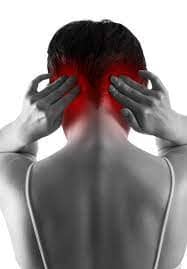Students with narcolepsy face unique challenges in the educational setting, as this neurological condition can significantly impact their academic performance and daily functioning. Understanding the complexities of narcolepsy, its symptoms, and the hurdles it presents in a school environment is crucial for educators, parents, and healthcare providers alike. In this article, we will explore the various educational resources and strategies available to support students with narcolepsy, aiming to create a more inclusive and accommodating learning environment for these individuals.
Understanding Narcolepsy: Overview and Symptoms
Definition of Narcolepsy
Narcolepsy is a chronic neurological disorder that affects the brain’s ability to regulate sleep-wake cycles. People with narcolepsy often experience excessive daytime sleepiness and can have sudden bouts of uncontrollable sleep.
Main Symptoms of Narcolepsy
Common symptoms of narcolepsy include excessive daytime drowsiness, sudden sleep attacks, cataplexy (sudden loss of muscle tone triggered by strong emotions), sleep paralysis, and hallucinations when falling asleep or waking up.
Educational Challenges Faced by Students with Narcolepsy
Impact of Narcolepsy on Academic Performance
Narcolepsy can significantly impact a student’s academic performance due to disrupted sleep patterns, daytime sleepiness, and difficulty concentrating in class. Students may struggle to stay awake during lectures, complete assignments on time, and perform well on exams.
Social and Emotional Challenges
Students with narcolepsy may face social stigma, isolation, and feelings of embarrassment due to their condition. Coping with the unpredictable nature of narcolepsy can also lead to anxiety, low self-esteem, and challenges in forming and maintaining relationships with peers.

Strategies for Supporting Students with Narcolepsy in the Classroom
Individualized Education Plans (IEPs)
Creating individualized education plans (IEPs) can help students with narcolepsy receive accommodations tailored to their specific needs, such as extended time on assignments or exams, opportunities for frequent breaks, and access to a quiet space for rest if needed.
Implementing Structured Routines and Breaks
Establishing structured routines and incorporating scheduled breaks can help students with narcolepsy manage their symptoms more effectively. Providing a predictable daily schedule, allowing for short rest periods, and encouraging healthy sleep habits can support students in staying alert and engaged in the classroom.
Assistive Technologies and Tools for Narcolepsy Management
Alerting Devices and Apps
Alerting devices and smartphone apps designed for individuals with narcolepsy can help students stay vigilant and alert throughout the day. These tools may include vibrating alarms, alerting bracelets, and apps that monitor sleep patterns and provide customized reminders to help students stay awake and focused.
Sleep Hygiene and Lifestyle Management Tips
Educating students about the importance of good sleep hygiene and lifestyle management practices can empower them to better manage their narcolepsy symptoms. Tips such as maintaining a consistent sleep schedule, creating a comfortable sleep environment, and incorporating regular exercise and healthy nutrition habits can contribute to improved overall well-being and academic performance.
Collaboration between Educators, Parents, and Healthcare Providers
Navigating the world of narcolepsy in educational settings requires a dream team (pun intended) of teachers, parents, and healthcare providers working together. Effective communication is key. Think of it like a group chat where everyone’s on the same page, sharing insights and strategies to support the student with narcolepsy. Remember, collaboration makes the Zs (yes, sleep) happen!
Creating a Narcolepsy-Friendly Learning Environment
Let’s set the stage for success! Optimizing classroom lighting and seating arrangements can make a world of difference for students with narcolepsy. Bright lights and comfy seats can help keep those eyelids from getting too heavy. And don’t forget to create quiet spaces where students can recharge their batteries (metaphorically speaking).
Addressing Stigma and Promoting Awareness in Schools
Time to bust those narcolepsy myths and misconceptions! Educating peers and teachers about narcolepsy can help create a more understanding and supportive school community. Let’s spark conversations, raise awareness, and promote a culture where everyone feels included and accepted. It’s all about building a school that’s as woke as you are after a good night’s sleep (or a good nap)!
Conclusion
With a little teamwork, some creative adjustments, and a whole lot of awareness, supporting students with narcolepsy can be a snooze. I mean, a breeze! By fostering collaboration, creating a narcolepsy-friendly environment, and tackling stigma head-on, we can ensure that every student has the opportunity to thrive and succeed in school. Let’s dream big and make education a place where every student feels seen, supported, and ready to conquer the world – one nap at a time.By implementing tailored support measures, fostering collaboration among stakeholders, and raising awareness about narcolepsy, we can better assist students in overcoming the obstacles they face in their academic journey. With a proactive approach and a commitment to inclusivity, we can empower students with narcolepsy to thrive in the educational setting and reach their full potential. Together, we can create a more supportive and understanding environment for all learners, regardless of their unique challenges.




